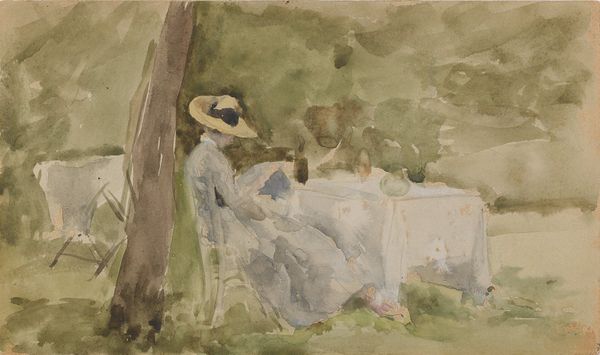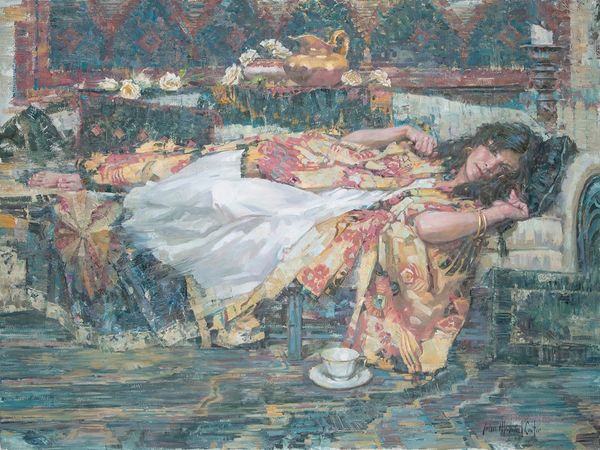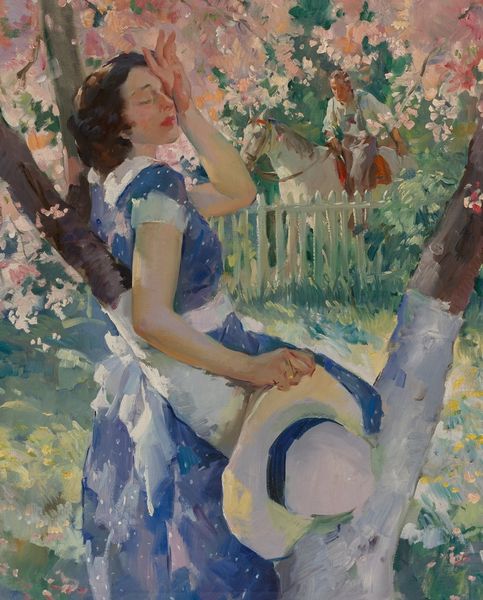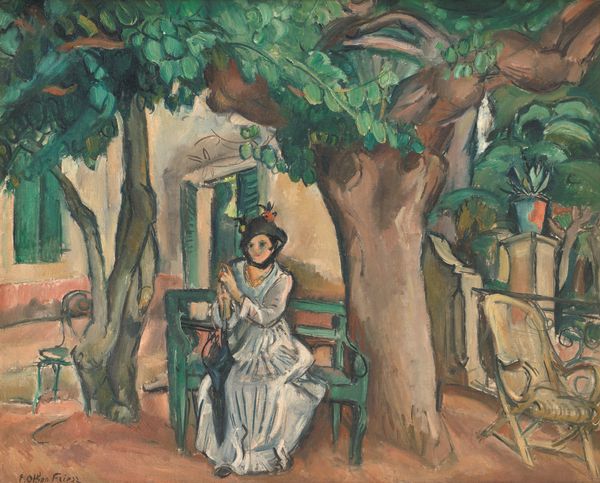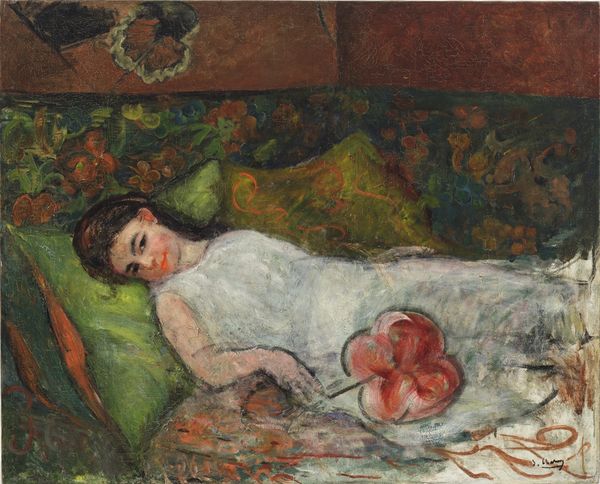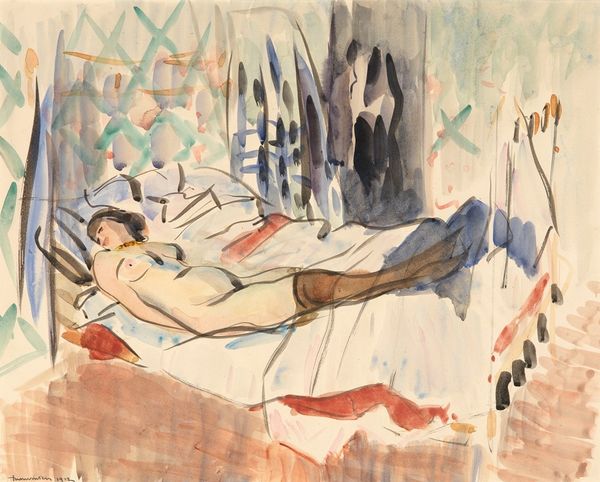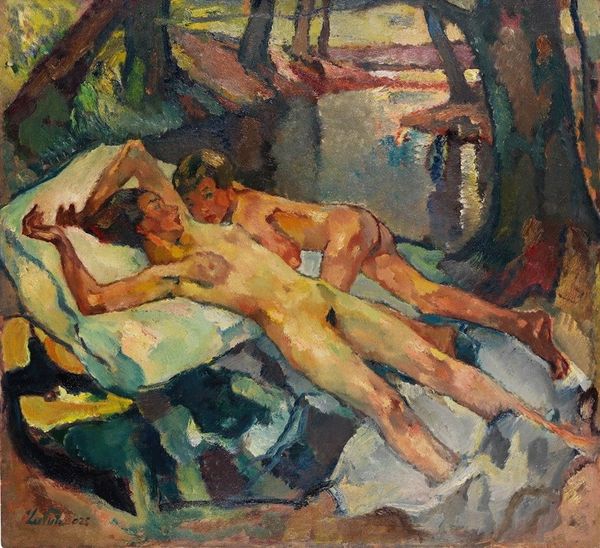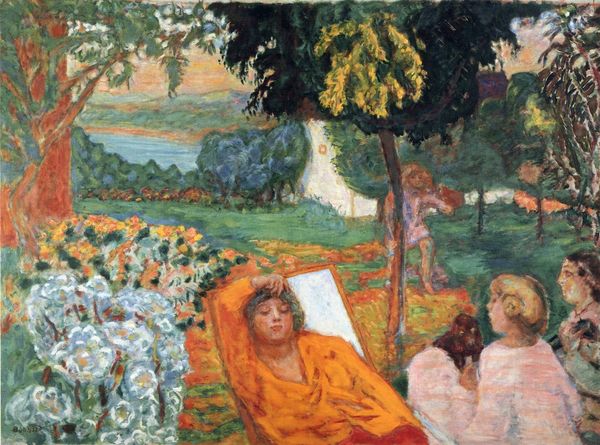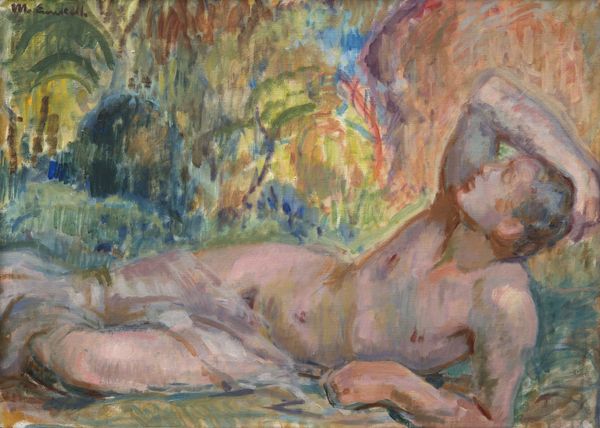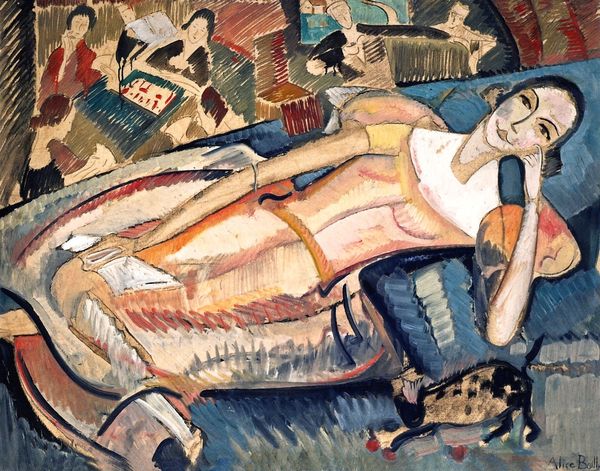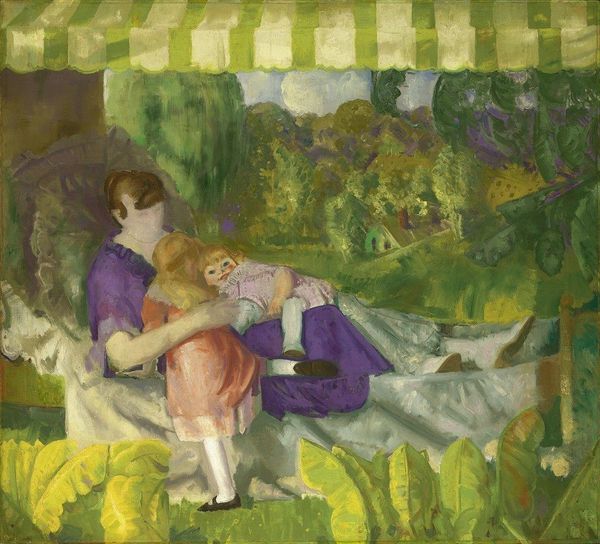
painting, oil-paint
#
portrait
#
fauvism
#
fauvism
#
painting
#
oil-paint
#
landscape
#
figuration
#
oil painting
#
nude
Copyright: Public domain
Editor: Here we have Henri Manguin's "La Sieste," painted in 1905. It’s an oil painting depicting a woman resting on a lounge chair outdoors, bathed in dappled sunlight. I’m immediately drawn to the bold colors and the relaxed atmosphere. What do you see in this piece from your perspective? Curator: Well, given its Fauvist style, "La Sieste" really stands out. The historical context is key here: early 20th century France, a society grappling with industrialization and rapid social changes. Artists like Manguin sought refuge in the natural world, depicting leisure as a form of escape. But is it *just* escape? Or is there something more to depicting the female nude in a leisurely environment during this period? Editor: That's interesting. I hadn’t considered that the woman’s pose and setting might have a broader meaning. Do you think there’s a connection to the changing role of women in society at the time? Curator: Absolutely. We can consider it as the beginnings of female emancipation. Though not explicitly political, works like "La Sieste" challenged traditional academic nudes that catered to a male gaze. Instead, Manguin shows us a modern woman, comfortable in her own space. Is it simply art, or is art serving as a mirror for the society as it wants to evolve? Editor: So the seemingly simple image of a woman resting actually reflects bigger societal shifts? That's amazing. Curator: Exactly. The painting isn’t just about beauty; it’s a snapshot of a changing world. Reflecting on this painting has encouraged a different way to understand how art can contribute to social change. Editor: Thank you, I hadn't realized how complex such a simple, evocative image could be. It shows that the image's reception depends heavily on the environment where it emerges from.
Comments
No comments
Be the first to comment and join the conversation on the ultimate creative platform.


